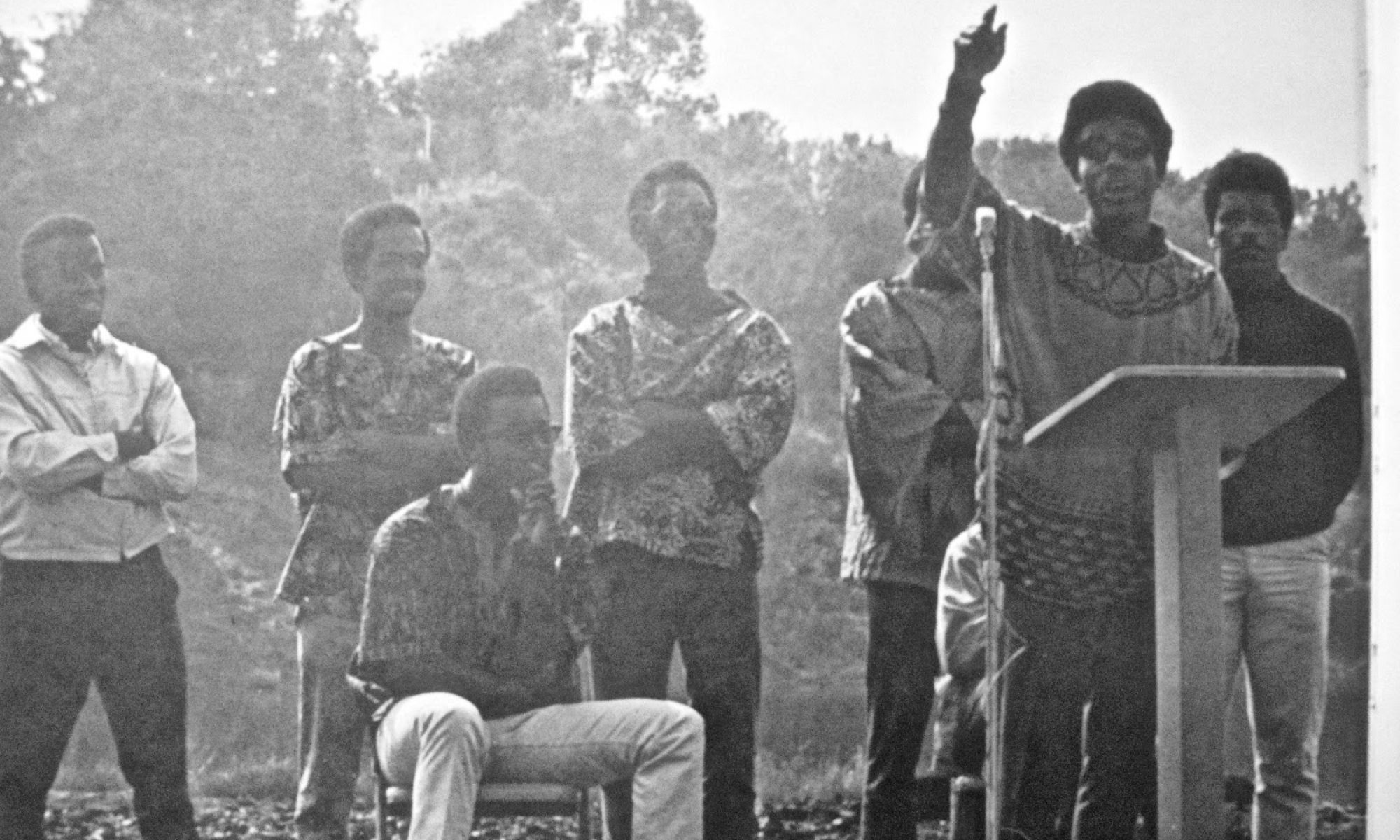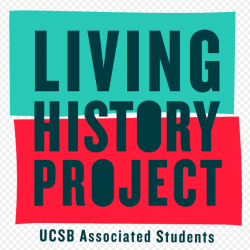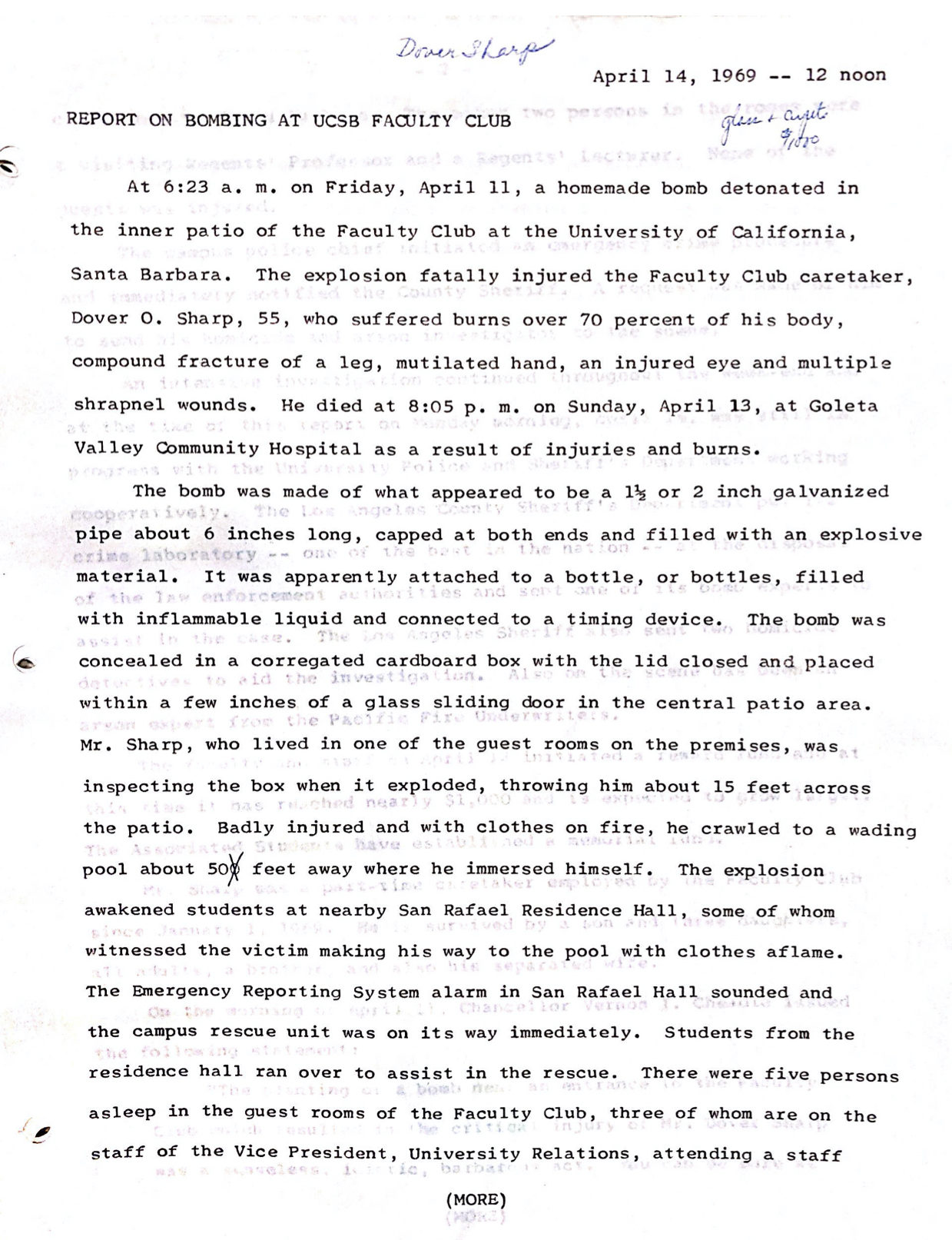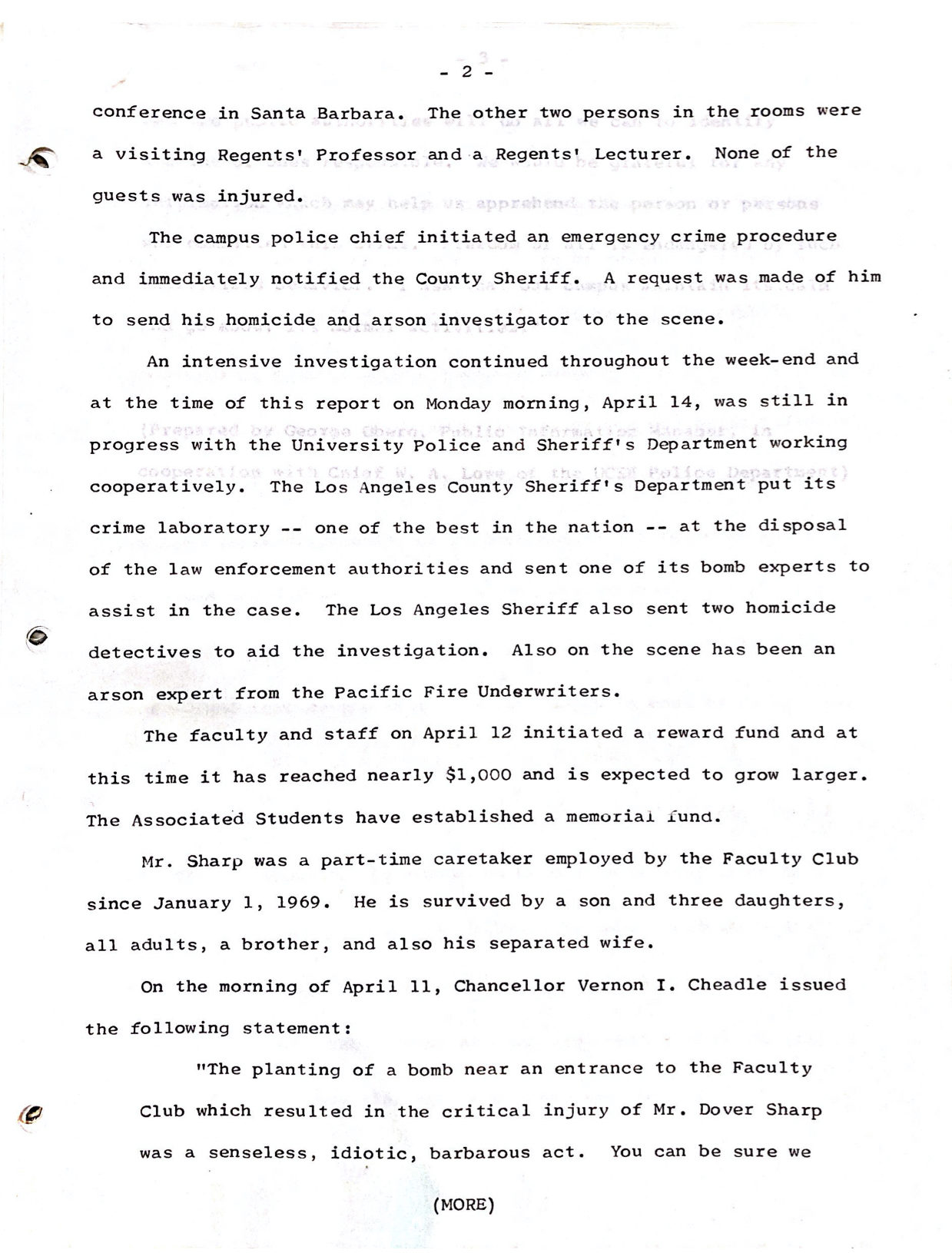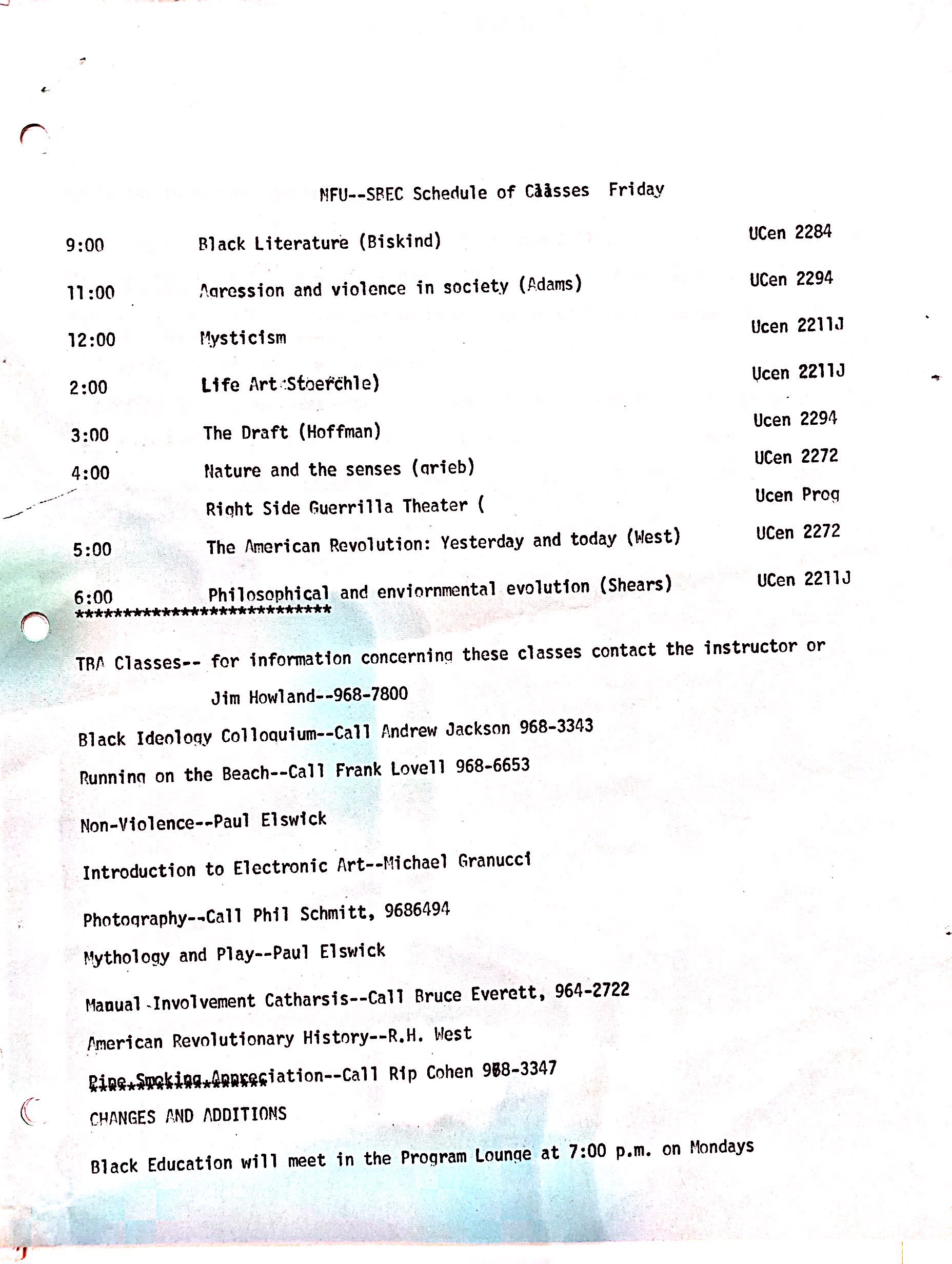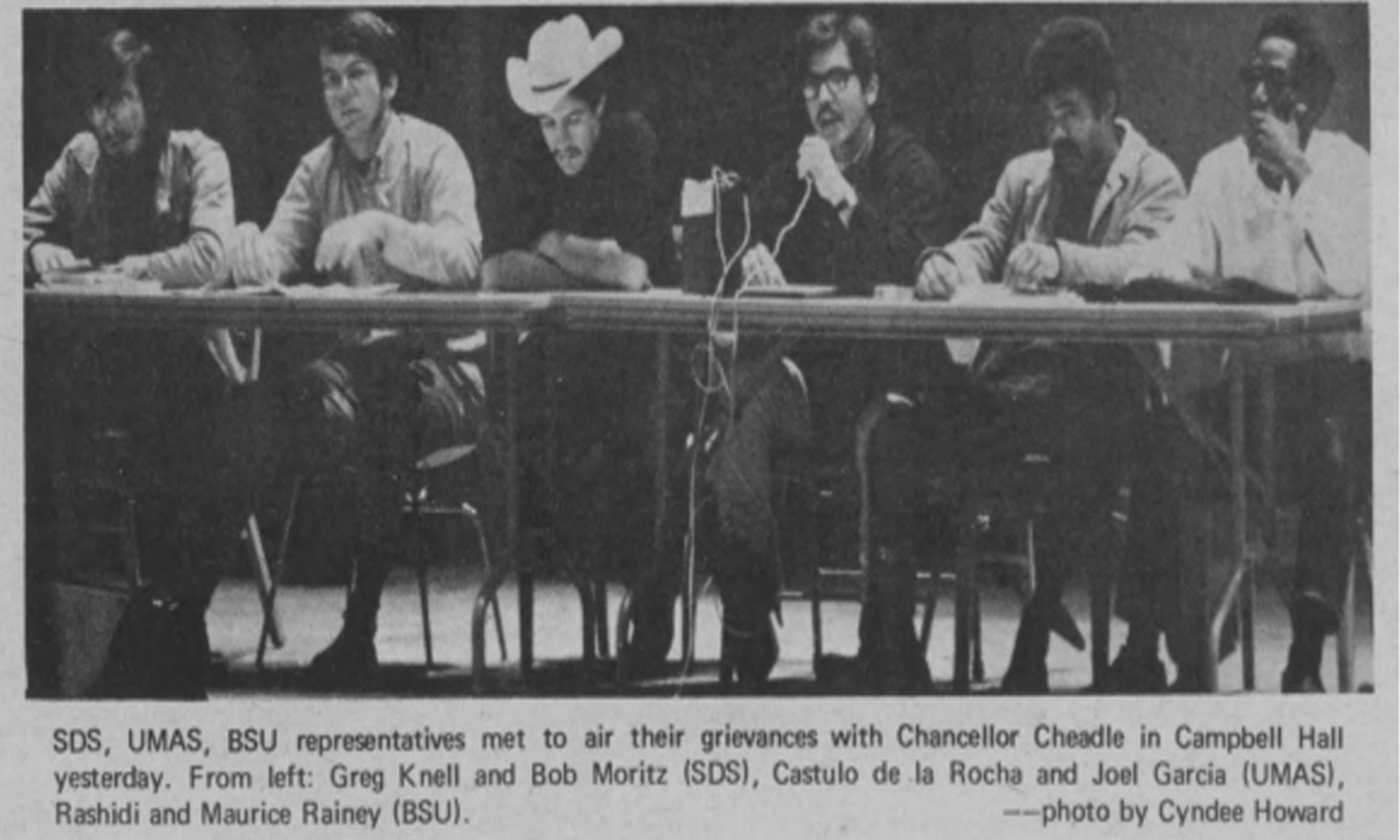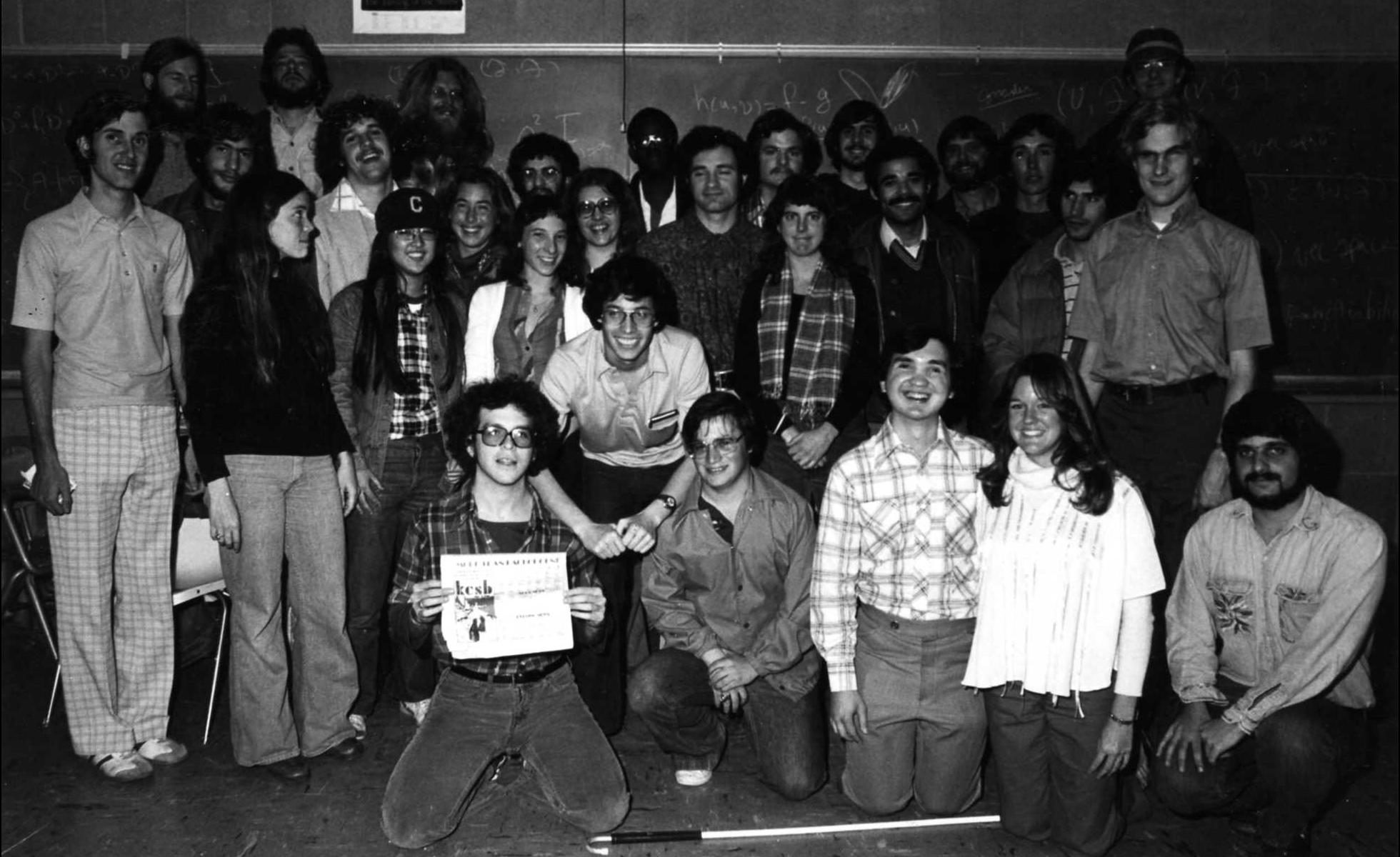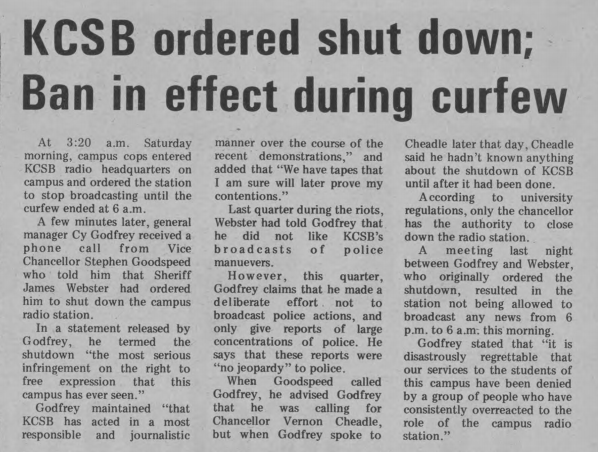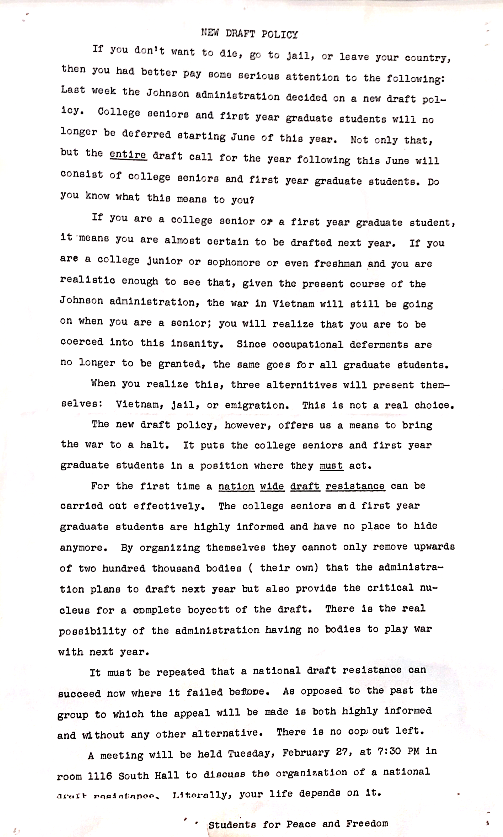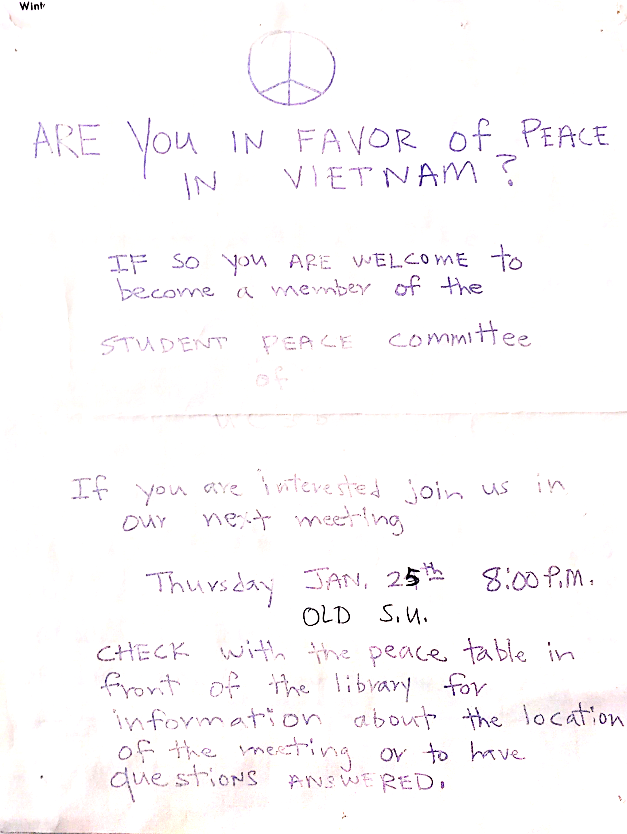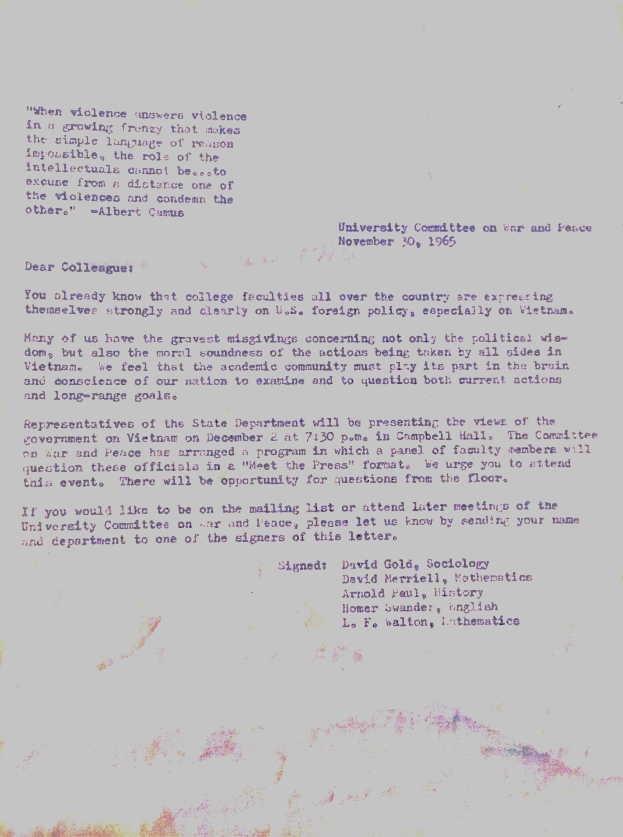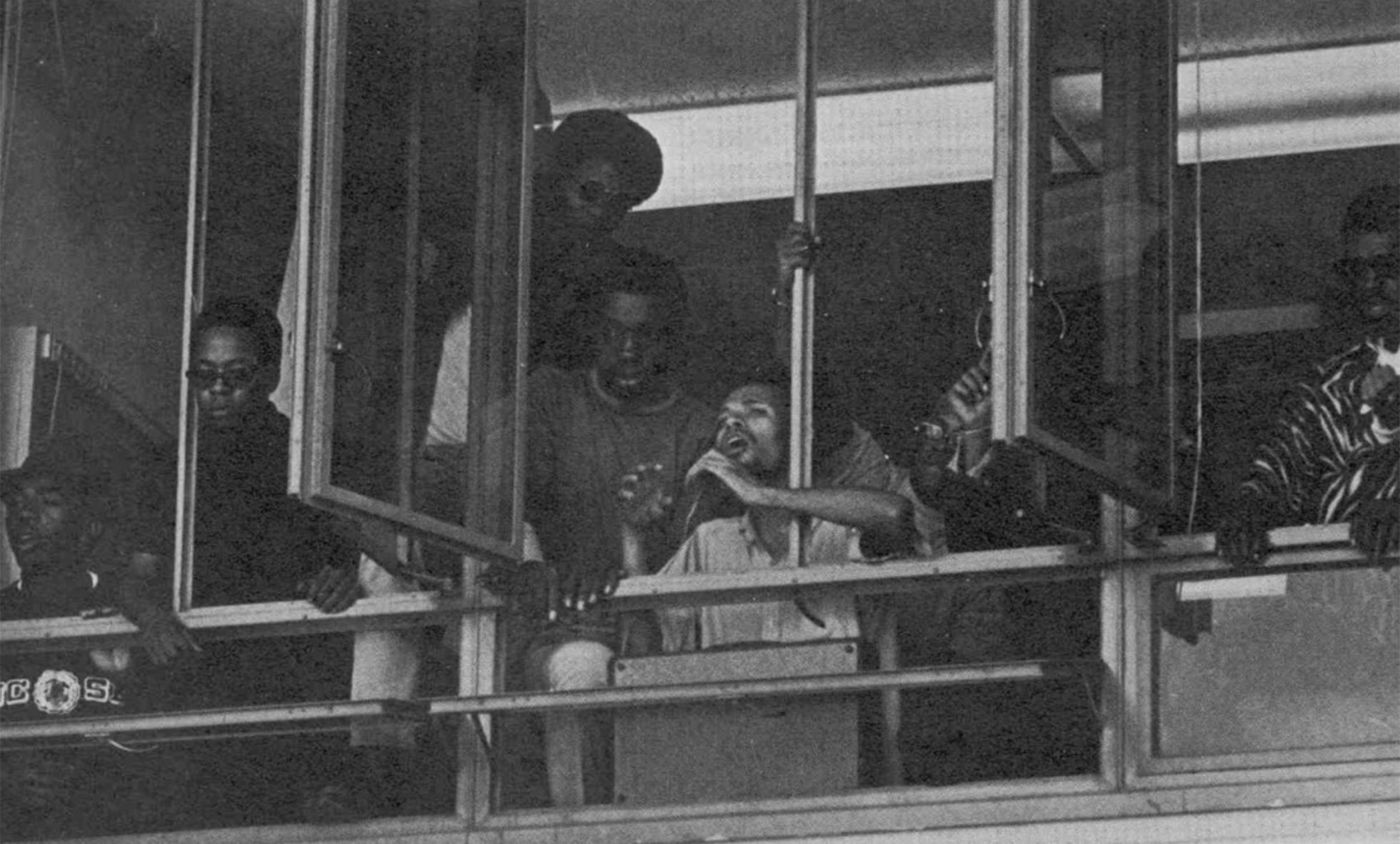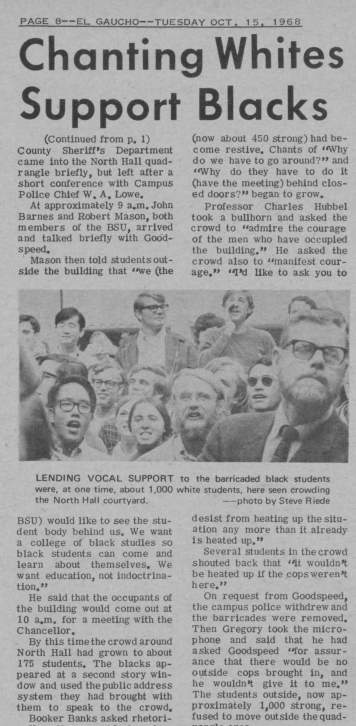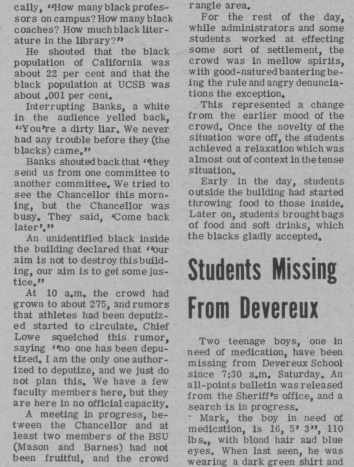Featuring Ashley Rusch, Lekha Sapers, Lisa Osborne, and Ted Coe
How did you get involved with KCSB?
ASHELEY RUSCH: My name is Ashley Rusch. I am the internal news director with KCSB, pronouns she/her. I’m a fourth-year communication major with a minor in professional writing and journalism, and I got involved with KCSB as a very timid sophomore. I was always interested in journalism, but I spent a year at the Daily Nexus doing print journalism, and I wanted to broaden my horizons a little bit into broadcast. And so I came over to KCSB, where I reported on a couple stories here and there before COVID hit, and then was encouraged by our lovely news and public affairs director Lisa to apply for the news director position. And I’ve been here ever since.
Lehka Sapers: Hi, I’m Lehka. I am a second-year film and Global Studies major and I’m also minoring in Earth Science. I am the station’s archives coordinator as of right now, and I got involved with KCSB at the beginning of my freshman year. When I started programming, I had a hip hop show called Coast to Coast, which I did online because of COVID, and then I got more involved as the year progressed and I finally got onto campus, and now I’m here on Excom and I’m really excited to spend another two years on Excom.
Lisa Osborne: I’m Lisa Osborne. I’m the news and public affairs director, so I’m a career staff person at KCSB. So as Ted and I came to KCSB because I just happened to meet one of KCSB’s music hosts, and then I found out there was a job opening here, so I applied.
But I spent most of my 20-plus career in broadcasting, anchoring news at radio stations in Los Angeles and hosting music shows for a national radio network.
Ted Coe: I’mTed Coe, Staff Advisor. I started at KCSB in October of 2000 as an employee. My job back then was administrative assistant, but largely in charge of the annual fund drive and administrative operations, and that role has changed over the years somewhat, expanded. I had been on KCSB as a guest when I was in grad school during the 1990s, and I was a listener too. But I was involved in a TA union, the UAW affiliated teaching assistants union and doing organizing for that. And KCSB provided a forum for us to discuss our issues and the struggle we were facing with the university, not recognizing our rights as employees and that kind of thing. And so on shows like No Alibis, which is still around with Elizabeth Robinson, so just making sure we can get our story out and help build the movement. I was also a fan of the music culture of the station as a listener and had friends who were involved at the station. And I applied when I was kind of trying to find new work while still in grad school, and my dissertation was on the punk subculture and the English department here, but I worked at a record store and knew people at the station and when a job opened up and I was kind of needing supplemental work along with my schooling, that administrative assistant job, I thought it was a good kind of opportunity. And here I am over 20 years later still working at KCSB.
That’s a really fun insight into KCSB. What are your sort of day-to-day and overarching responsibilities and how they fit into how KCSB functions as a whole?
Ashley Rusch: So my role typically consists of working with my fellow news director and Lisa or news public affairs director to produce twice weekly newscasts on KCSB FM 91.9 and lead and train a team of volunteer reporters who are all very lovely people, ranging from all four years of UCSB students to community members that have been with us over many years. And then a very large part of my job consists of putting out the COVID 19 newsletter, which is sent out to the entire student body, which I’m sure we will touch on a little bit more. But that’s become a very large part of my job since the pandemic began. Other than that, just reporting on issues that pertain to local Santa Barbara news COVID news, UCSB related topics, and just constantly expanding my coverage and working with our reporters to do that as well.
Lehka Sapers: Like I said before, I’m the archives coordinator and my responsibility really is to preserve the station’s history dating back to its inception around 1961. So that role entails the digitization of many discs and all of the other archive mediums that we do have. We have sent discs to special collections in the library so that we can get those digitized. My job is also to spearhead the grant process, and we just finished, I believe, $1,300 worth of digitization through special collections, which I’m really, really stoked about. It’s also my job to interview alumni, get information from them, and to just honor the station’s history and how storied and incredible it really is. I also do the Pacifica Radio Archives that air from 4 to 5 every day.
Lisa Osborne: And I support Ashley and Daniel, our other news director, in the way that they work with reporters, and I will also work with reporters just depending upon our schedules, because we have a pretty good sized team of reporters, maybe 15 people now, I guess, both
community members and students. So Ashley and Daniel and I will figure out how we want to do training for the reporters and come up with story ideas to pitch the reporters. I also get involved in different meetings on campus, especially relating to Isla Vista community, not only campus, but community meetings too, so I’m part of the Isla Vista Community Network monthly lunch meeting. And because we have a show called Inside Isla Vista that’s about Isla Vista, so it’s a once-a-week, 28 minute program that has different hosts and then we talk about Isla Vista. So just kind of when I’m out in the community meeting with different people who have a stake in Isla Vista, they’ll find out about KCSB so we can produce public service announcements for nonprofits or events. So sometimes since I’ve been here for six years, people have gotten to know me so they’ll ask us to do a public service announcement. But even more recently, through our COVID newsletter, which started daily right when we were in the thick of the pandemic at the beginning, now we seem to get requests from all over campus, like administrators.
People want to get a survey out, they want something. So we’re kind of getting to be known for our COVID newsletter for being able to have the eyeballs of students and to be able to help publicize events. So it’s not just myself through different meetings, meeting people, but it’s our actual newsletter and Ashley and Dan, and Ashley and Aubrey, who was our other news director before that, really, really have become known. So because we’re an educational station, we don’t take any paid advertising. So we all of the commercials that we run are free for public events that are worthy, if it’s a nonprofit, we’re happy to help people out. And then another part of my job is compiling the report for the FCC Quarterly. So, we have to write about how the ways in which KCSB is serving our local community so we put together a report and then it gets filed on the FCC’s website. So, when our license is up for renewal, if anyone ever challenges us, we have documentation of all the ways in which we’re supporting the community, and that’s through the local news coverage that we do and the public service announcements that we do, and also through our other programs.
Ted Coe: I do a lot– supervise our student employment and there’s 18 student workers who are just under half time, run all of our departments and I provide coaching to them and other volunteers. I work on special projects, help with kind of support for financial affairs at the station, like our fundraising kind of deposits and the like. And right now I’m working on the 60th anniversary reunion planning and event organizing. I kind of act as a P.R. public relations point person for alumni and the greater community. So help focus on events and our relationships with outside entities like promoters, artists, and that sort of thing, but kind of broker that with the student employees and help them develop relationships with venues and promoters and that sort of thing. We do a lot of media literacy.
I find it so interesting how diverse the programming of KCSB is and how we’ve only scratched the surface. There’s radio programming and there’s newsletters and archives and just goes all the way down. It’s amazing.
Lisa Osborne: But something that’s different about KCSB is that we are we have programmers that are very engaged and we have like how many–over 100 programmers– whereas a lot of other college stations like are kind of going dormant. The students aren’t interested in it. So we’re different from most college radio stations and that there’s a lot of interest in KCSB, a lot of interest in being involved in KCSB. And also it’s multigenerational since we have volunteers and students.
Wow. That is really cool. You can definitely tell how the amount of effort and dedication there is in KCSB programming. Diving into more recent history and talking about KCSB– how have you seen the KCSB change since you’ve been involved?
Ashley Rusch: I think I have kind of an interesting perspective on this because I joined KCSB right when everything started changing, and I have that experience of what it was previously and how the newsroom functioned in person. The kind of stories that we covered and then shifting into the pandemic and how that dramatically changed a lot of our
programming and everything. But since I joined, I got this position in June 2020, so that was kind of right in the thick of the pandemic. And pretty soon after that, the news department, which was functioning remotely pretty well during that time, we were able to sustain our reporters and everything. We decided to utilize a project that Lisa had already been working on, which was putting out daily COVID updates for our programmers. And we decided to expand that and reach out to the entire campus community with that information. We found that there was a lot of updates coming from the university, coming from the Chancellor, but a lot of students were really confused and didn’t know what to do with that information. They had the ability to look at public health websites, dashboards, and things like that, but we really wanted to provide that in an aggregate news format for them to just kind of skim through and see and trust that they were going to get the most up to date information.
So our news team during that summer and then really amping up in the fall, decided to put out a three times a week full student-bodywide newsletter, which featured the latest information, testing resources, later becoming vaccine resources, and just any current
updates that we could provide for students. And I really think that that helped establish KCSB News and give us kind of a name for ourselves during that time. It was also something personally that made me feel like I was able to kind of give back to my community and keep me going during a time that was riddled with a lot of uncertainty. And it was really confusing for a lot of us, but just having the consistency of putting out that newsletter was really advantageous, I think, for our news department, for the traction that we got and also just for the campus community and letting, you know, a lot of freshmen that were coming in for the very first time online, they knew that we were there for them providing this resource. We tried to make those intros as friendly as possible, myself and
Aubrey, the previous news director at the time. And as Lisa mentioned earlier, the newsletter really has since transformed into kind of like a community spot where we can promote events and local organizations.
We’ve put out some really important information there that has been picked up by other news outlets. At one point, I believe someon on Reddit said, like, we were giving out better information than the university was, which was kind of cool, just, you know, establishing that camaraderie, kind of like a special perspective. As a student journalist, I always thought like, what would I want to know as someone that’s reading the news? What am I curious about and I really applied that perspective in our newsletter coverage, so I would say that’s how KCSB news has changed since then. And obviously, a lot of our coverage has centered around COVID 19. We’ve spoken to a lot of experts over time, but also just in general KCSB has really gotten more flexible and been able to roll with the punches. We, you know, we never stopped running. We kept going. We went to pre-recorded. We stayed on 24/7, which was a really big task to tackle as a campus radio station. But I’m really proud of all the efforts that all of our programmers and executive committee have done to keep us sustained.
Lehka Sapers: Like Ashley was saying, I think that programming has gone through a very large transition over the course of COVID 19. I was not here at the onset of the pandemic, but I came in towards the tail end of it, and I got a lot of the online programming. I did a lot of my shows from virtual DJ, from my house or from my apartment, which was a little bit frustrating that I couldn’t get into the station but come spring 2021, I came into the station for the first time. I saw my office, I saw the music library, and I was like, Wow, this place is
really incredible. And now around winter 2022, I know our program director and our assistant program director are working towards reintegration. I’m not sure if their goal is total reintegration, but I know that as of now there’s a very good portion of programmers who are in-person following the pandemic, which is huge. And also I know that K-JUICE are training program for novice programmers is becoming a lot more intimate and there’s going to be a lot more one on one attention to make sure that they know exactly what to do when they get in person in studio.
Ted Coe: Well, the station is grown in terms of the number of students and staff. News and public affairs director was introduced during my tenure, and it started with a large grant from the Sarah Miller McCune Foundation that supports a lot of media initiatives. Then it
became a career staff position, and that’s allowed us to grow our news department in a lot of ways. We added a second news director, we’ve added a librarian position, a business coordinator position, and a digital media coordinator position also. We’ve experimented over those years and doing events that are maybe a little more niche than program board. Hosting concerts in our courtyard was kind of an innovation and we experimented with a lot of things like film presentations and lectures. When opportunities arise, we might agree to try things we’re not used to doing, but we always try to make them work and sync with the broadcast mission of the station, which is our primary function. So like some of those courtyard concerts, a number of them were broadcast live. A couple of years ago, we were voted best radio station in Santa Barbara by the Santa Barbara Independent which was really exciting and kind of speaks to our impact in the community.
We’ve built up a lot of partnerships with units and departments on campus and faculty and like really expanded our multimedia imprint. It’s important to see KCSB as a multimedia entity, I think, and that’s evolved and changed over time so that people have more of an outlet for the written word in multiple formats on our website and zines and through social media and the like. Then the whole thing with just having remote broadcasters during the pandemic that we had to really pivot and we were well equipped to. A few other stations relied on alumni to help kind of flesh out a 24/7 schedule. And we still have a lot of these programmers who are doing music and cultural arts shows and other kinds of content who are still with us. That’s built some engagement with our community and really helped us stay fresh at a time when sister stations were having a run a lot of archived material and weren’t being as current or keeping people as up to date on what’s going on in their community.
That’s so important, especially during the time when we were all so isolated. It was nice to feel up to date and connected with the UCSB community.
Lisa Osborne: A couple of things that started since I got here was our Inside Isla Vista show, And then and then once a year we offer course credit to students who want to report for KCSB News or sports. They can earn course credit winter quarter in exchange for reporting for us.
Let’s pivot to talking about more of the historical side of KCSB. I’m interested in hearing about its establishment: why was it that moment and why was it those people?
Ted Coe: It started in the dorms in 1961, ’62, and it was called Radio Navajo after the name of the hall in Anacapa. There was a student who had ties to radio and his family. FM was kind of like a new medium in a lot of ways and so they started a carrier current station with a little low power kind of set up but it was a wide kind of broad interest, from what I’ve heard and learned. It wasn’t just kind of the nerdy people who like to play with transistors and that kind of thing. That was the time when social media didn’t exist in the way we’ve come to become used to. By the time it started being heard across campus and then increased its reach, students would kind of communicate with each other by reaching out to the radio station and making dedications and getting messages relayed. There was a kind of interactivity there. But the Kennedy assassination happened in 1963 and other stations were emerging. We were the first in the U.C., probably because Santa Barbara seemed like a safe bet for this kind of forum, as opposed to the Bay Area where activism had already had an impact even before the free speech movement. So the students at different
campuses were starting these stations and they started communicating really early in the mid-sixties. The U.C. radio network established communication across different campuses. And that has grown over the years that we’re affiliated with UCRN and with other community radio and grassroots radio associations. But the Kennedy assassination was in 1963 and I think maybe changed people’s consciousness a little bit about the role of radio and the lives of the community it’s part of. Then between the mid-sixties and seventies, the radio station really had a significant impact in terms of reporting on covering the takeover of North Hall in 1968 and race issues on campus. The bank burning also is an important symbol, we even have a small imprint Bank Burner Records, where we put out a couple of vinyl recordings using that label. KCSB was there too. It let people know about what was
going on in the community and how police were being heavy-handed and the drug war was really intense and the war in Vietnam. And then 1970 was when the events in Isla Vista exploded, but the station was blamed for just reporting on stuff and perceived as
kind of stage managing activities in the streets. Street fighting and that kind of thing. But we’ve always been covering important events in the community, affecting students.
The growth of Isla Vista has been through self-sustaining organizations like the Food Cooperative and the clinics and that kind of thing. It’s a piece of what the radio station was about and discussing. Further afield, I think the newsroom has been substantial– the
folks from the late sixties had bigger newsrooms than professional stations. Covering the Diablo Canyon story that was like further up the coast but had implications for all of the Central Coast because of the fault line. In the late sixties, Storke Tower was commissioned as a student media center, and the station built a transmitter up on broadcast peak in the Santa Ynez Mountain Range. The station was there when there was all of these things that happen in our community, like the birth of Earth Day, the plan de Santa Barbara, El Congreso, and the rise of the Chicano power movement. Then there was a collective called Radio Chicano in the seventies and eighties. SB has been kind of like a lightning rod and a sounding board for what’s going on on-campus and in our greater community. Being on the mountain like that raised our broadcast range significantly. Where you had like maybe a low power FM kind of impact, all of a sudden it’s reaching the tri counties and south San Luis Obispo County and down to around Camarillo.
Lisa Osborne: Here’s some stories from 1970, the Bank of America burning. There’s about an hour and a half an hour and 47 minutes worth of audio from KCSB that we ran this there where the bank burned. And you’ll actually hear some reporters went out on the street with
their recorder. The cops are busting into their apartment at one part and they’re pulling them out of the apartment. And because the cops were illegally entering people’s apartments at the time, the sheriff wound up going on trial. You’ll be shocked at the police
coverage and the police presence that was in Isla Vista.
Lehka Sapers: If we’re talking about UCSB’s anti-establishment history and the culture that they just put out into IV, we could talk a little bit about the Honey Hearings and how that kind of sparked KCSB presence in Isla Vista as a force of news and not just a force of radio. Those hearings were allegations of police brutality from a man named Joel Honey. He was accused of flying over Isla Vista and dropping tear gas canisters into the neighborhoods. I’m not entirely sure if this was true or not, but the coverage of that and the bank burnings,
as well as KCSB being shut down was really the onset of the news department, and not just a station that was that was opposed to playing rock and roll because it was seen as offensive. A station that stuck just to AM radio waves and broadcasted 50 feet away
from Anacapa Lawn. So that was a really big turning point in the station’s history, I think.
Lisa Osborne: At the time they had a lot of reporters actually, and they would have to call in from the payphones. They would actually be running to the payphone to call in their stories. They’d be watching what was going on in Isla Vista and go to the payphone.
Ted Coe: There’s an alum, Ann McCreary, who has good stories. Her ex husband, who’s now passed on was chief engineer and he started while he was a student. They had basically set up a reporting station in Isla Vista and borrowed phone lines from local businesses because stuff was happening in the streets. They just had to be really creative with creating lines and networking from out in the streets, out in the larger community.
That is that an incredible amount of resourcefulness on behalf of reporters from KCSB. That absolutely goes to show the necessity also of student reporting and reporting outside of the established news sources.
Lehka Sapers: I think it’s interesting that you say that, too, because although the reporting itself was out of the mainstream establishments, KCSB was becoming more and more established on campus as an on-campus presence as they moved from Anacapa to San Miguel to Storke Tower. I know that they also spent a little bit of time in the UCen as well, but they’re really just a means of communication and they wanted to reach as many people as possible. So I think that they moved to Storke Tower in an effort to search for better
coverage, better antenna, better tower, better AM service at that time to promote their 24 hour operation schedule as well as get an increase in budget. That movement prompted both the transition of a better radio station as well and later on, the transition to becoming an FM radio station on FM air.
Ted Coe: They were growing. What they had in the UCen was much smaller than what we have. At certain points, especially during non-Covid times, you might hear a live band performing in Studio A or activities around the station and that wouldn’t have been possible in the space they had in the UCen. The Storke building was funded by donations from the Storke family and in honor of Thomas. In 2019, the Student Media Resource Building celebrated its 50-year anniversary. They had to work with administration and they created a coalition of campus officials and students, largely driven by students. They got support from career personnel and administration faculty.
We talked about KCSB as an agent of change and that’s really come through in a lot of these examples. What role do you think that KCSB plays on the UCSB campus?
Ashley Rusch: Yeah. I think just right off the bat, we’ve definitely mentioned this already, but what immediately comes to mind is community building. I think both within my experience and I’m sure anyone that’s been involved in KCSB in whatever capacity can attest that this is kind of our little home on campus. I’ve met my best friends here and really, really grown here in so many different ways. Coming in as someone interested in journalism, it’s really allowed me to grow in that way in the news department, but also really develop the leadership skill set and managerial skill set and all these other things that I think I didn’t expect to get from KCSB. And I think that’s really important. Just seeing how much people care about the station that have already graduated or gone elsewhere, I know Ted already mentioned this, but the fact that alumni all came back during COVID to keep the station up and running, it just shows that it’s like this giant group project that everyone’s working to sustain. We’re having our 60th anniversary coming up pretty soon as well on
April 30th. So that’s going to be really exciting and we’re really excited to see all of the alumni come back and just get together for this mutual, shared love of the station. Community building is really, really important. And we’ve tried to sustain that too, through the news department and have shown our entire student body that we have their backs and we want to provide them the most up to date information in a comprehensible way, especially in light of the university not always meeting that standard for information that we
would like to put out. I’m really grateful for the community that we’ve been able to build and continue to build a KCSB.
Lehka Sapers: I think on the campus in particular, we are a source of information for them. We propagate communication, I think, especially with the COVID newsletter that was super important. I feel as though that KCSB News gives the public a lot more information than the administration does, which I think is super awesome. And in terms of media and our media content, I think that it’s an impact that we have on more than just the campus, because we broadcast a very, very long radius as of now. That means that obviously a lot of people are listening to what we have to say which I think is super cool. We do have a region wide impact and I’d be excited to see how far that that does expand.
Lisa Osborne: I would say that KCSB offers a meeting place in space for different kinds of students to come together, because I feel like our group, our executive committee, is very welcoming to that, to all kinds of students from all kinds of backgrounds. It also gives the opportunity for students to have a voice and have a leadership opportunity since it is a student-led station. We make efforts to in our news department, and we can even grow more in being inclusive when it comes to getting the word out about our volunteer opportunities and stuff.
Ted Coe: I like that example. It’s a community center, physically and in reality. I remember a book from grad school called Imagined Communities. That kind of image always stayed with me because that’s what defines a community. So our alumni were part of that.
We could have some continuity. The listenership is worldwide in some ways and we’ve had alums who wanted to be part of this and were engaged and willing to give up their time as volunteers. We redefined how we might think of community in terms of Santa Barbara County and UCSB. It’s physical, it’s in-person, but it’s also virtual. That impact has changed, people’s listening habits have changed, the way they discover new content has changed. We do have on-demand platforms, we use SoundCloud for news and public affairs in some ways. We have an archive playing on-demand platform for the radio station and we provide playlists and all of those multimedia kind of ways we communicate that’s allowed us to stay relevant.
I don’t listen to as many podcasts, but I was noticing an ad on Spotify yesterday where it’s like you can listen to music playlists with a podcast and people commenting on the material that’s being played. And I was like, oh, so they’re still trying to figure out how to do
what radio does. There’s nothing like doing a deep dive and getting behind the music. Radio talks about things that are going on in your community, gives historical context, and talks about things that are under discussed or underreported or controversial. That’s the role we play too.
Thank you all so much! If there’s anything else you wish we talked about or anything else you’d like to add please do.
Ted Coe: There was a mid 1980s controversy over some music that got played on the air and the FCC tried to enforce rules around what’s called obscenity and art. That’s just one story. The background with Sean Hannity or like all the famous alums.
Lisa Osborne: Did we even talk about the Sean Hannity part? He got kicked off the air here. He had a radio show here and he engaged in hate speech. He got kicked off the air and then he went and got publicity after getting kicked off the air. And then that’s what landed him his first paying gig radio show
Ted Coe: He was really incendiary and very homophobic and he was using panic around the AIDS epidemic to demonize the LGBTQ community. It created controversy and then the way it was handled gave him an opportunity to position himself like he was being canceled or like he was a martyr. And that kind of gave him the national spotlight.
